Forget LeBron James or Travis Kelce.
Rahmanullah Gurbaz and Rashid Khan are where it’s at for Mudasir, a sixth-grader at Thornton Middle School. The two superstars play on Afghanistan’s national cricket team.
Mudasir and his friends watch as many of their matches as they can. But today is Tuesday, Mudasir’s favorite day of the week. It’s the day he and his friends get to show off their cricket skills.
“I come here to play cricket and work hard to go to the games and win the games,” he said.
When the final bell rings, he and the other boys race giddy with joy onto the playground into the November chill. They set up the wickets, stumps and bails. And they play their hearts out.
Hart Van Denburg/CPR News
When you’re more than 7,000 miles away from where you spent most of your childhood, there’s nothing like Tuesday after school. It’s practice time for the school’s cricket club. All 18 boys are from Afghanistan where cricket is the most popular sport in the country. In fact, cricket is the second most popular sport in the world. It’s set to debut in the 2028 Los Angeles Olympics. These boys are part of an effort to bring the sport to more Colorado youth.
“This game is for every country and (we hope) more will come to play cricket,” said Rashid, 13.
Before I watch, I’ve got to get a few things under my belt.
“What’s your favorite position?” I ask.
“Batting! Batting! Batting! Bowling! Bowling! Batting!” they yell out.
The main positions are batting (self-explanatory), bowling (pitching the ball), and fielding (like outfield), though none of these boys are much like that last one except eighth-grader Modasir, the mature, easy-going captain who radiates confidence.
“Everything is my favorite, batting, bowling, fielding, everything,” he said. “I just love this game. Cricket makes me feel proud and happy in this school.”
Many of these boys came to the U.S. within the past four years, after the Taliban returned to power in 2021. Some arrived in elementary school. Nearly half of Afghan evacuees who resettled in Colorado since that time attend Adams 12 Five Star schools. Adjusting from Afghanistan to the U.S. is especially challenging. The boys say it was hard coming to a new country, unable to communicate.
“I was so sad because nobody was talking Pashtu or Persian (Dari) and I can’t speak English,” sixth-grader Mohammad Edres remembers.
But the boys tell me, that when they learned there was cricket at Thornton Middle School, it changed everything.
“Friends is there,” said seventh-grader Idres.
Atiqullah said it’s much better playing at school than in a random park.
“We have club!” He smiles.
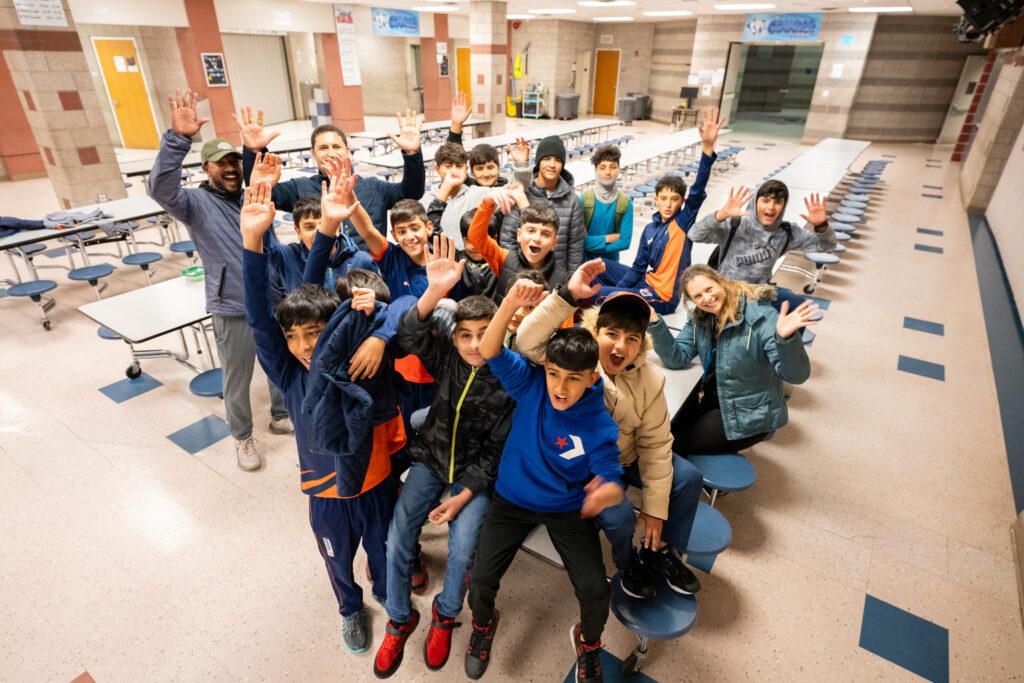
Hart Van Denburg/CPR News
How did a cricket club start at Thornton Middle school?
When Charlene Fauls, an English development teacher, was at an educator book study session, she heard from one of the teachers that the boys were playing cricket on Sundays in a community park. That’s when she got into gear.
“I did not know anything about cricket,” she said. But a neighbor connected her to the president of the Colorado Cricket Tennis League. He donated some equipment and connected Fauls to the Denver Youth Cricket Academy. It provides coaches. In 2022, a cricket club was born.
The district’s Adams 12 Cricket Program, in its third year, now has 54 players from three schools, including Thornton High School and Northglenn Middle School. The high school team plays other teams in Douglas County and Cherry Creek school districts. Right now, the middle school teams scrimmage, but sometimes the kids get to fill empty holes on teams during Denver Youth Cricket Academy matches.
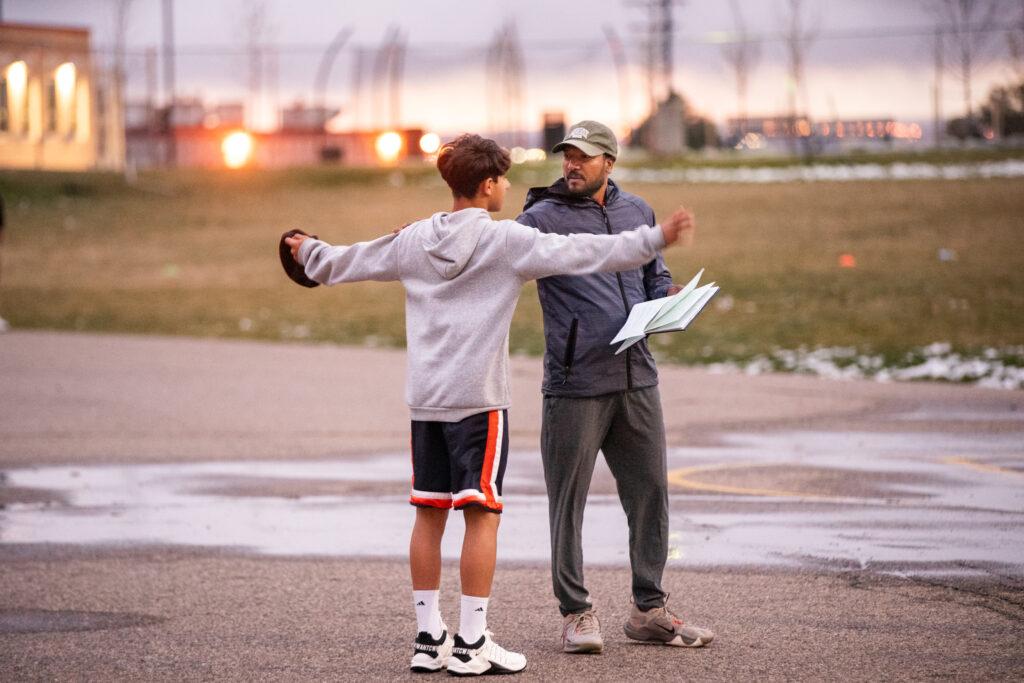
Hart Van Denburg/CPR News
Omid Farahi, a school “newcomer assistant” said he hears the boys talking about cricket in the hallways all week long.
“Some of them actually say they wanted to come specifically to this school because they had the opportunity to play cricket.”
It’s become a family effort for Fauls. She and her husband help drive the boys to matches. Her sons assist. Still, Fauls is always on the lookout for generous sponsors to grow the program to more schools.
On Tuesdays, she sees the boys’ pride when they wear their uniforms to school.
“They walk around with their head held up high, just like the basketball players wear their uniform on game day,” she said.
Wickets, bails and stumps
At first, cricket seems like controlled chaos to me, but the boys are super patient in explaining the game that dates back to the 13th century. There are two teams. One side bats and the other “fields” with someone throwing or “bowling” the ball. The batting team tries to score as many runs — running back and forth between two wickets — as they can.
Two players are up at once running between the wickets at opposite ends of the pitch. If the batter hits the ball and it hits the ground before it passes the far cone, the team gets four points. If it sails through the air and lands past the cone (like a home run), the team gets six points.
Passions run high. Team captain Modasir presses volunteer coach, Selvam Mani, who drives more than an hour to the school each week when he has a different opinion about a point. Scoring is complicated as there are lots of ways besides runs to get points through “extras.”
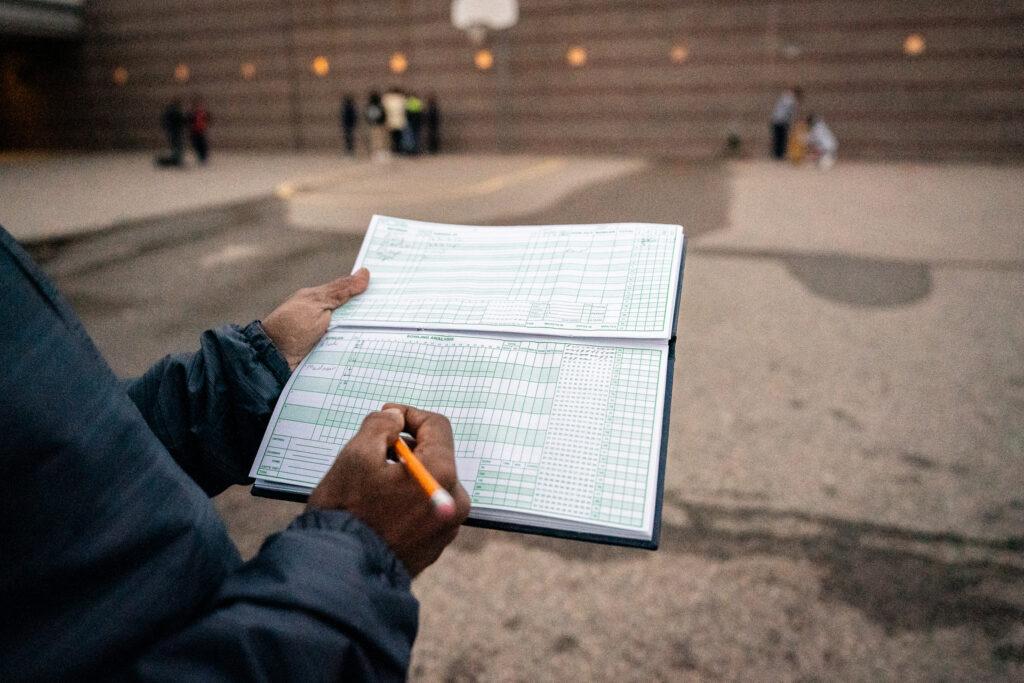
Hart Van Denburg/CPR News
As they play, the boys speak and yell in Pashtu or Dari, but sometimes English slips so I get more of a sense of what’s going on.
Some rules are too complicated for my first game. There are a zillion ways you can be dismissed or “out,” like if the wicketkeeper knocks a bail from a stump (the two small pieces of wood or plastic at the top of the stumps or vertical posts) before the batter returns after hitting the ball.
The bowler winds up. His elbow can’t straighten more than 15 degrees (I read that after the game). He runs a few steps propelling the ball forward. The bat cracks. The boys shriek, whoop and laugh. Sheer exhilaration is the only way to describe it.
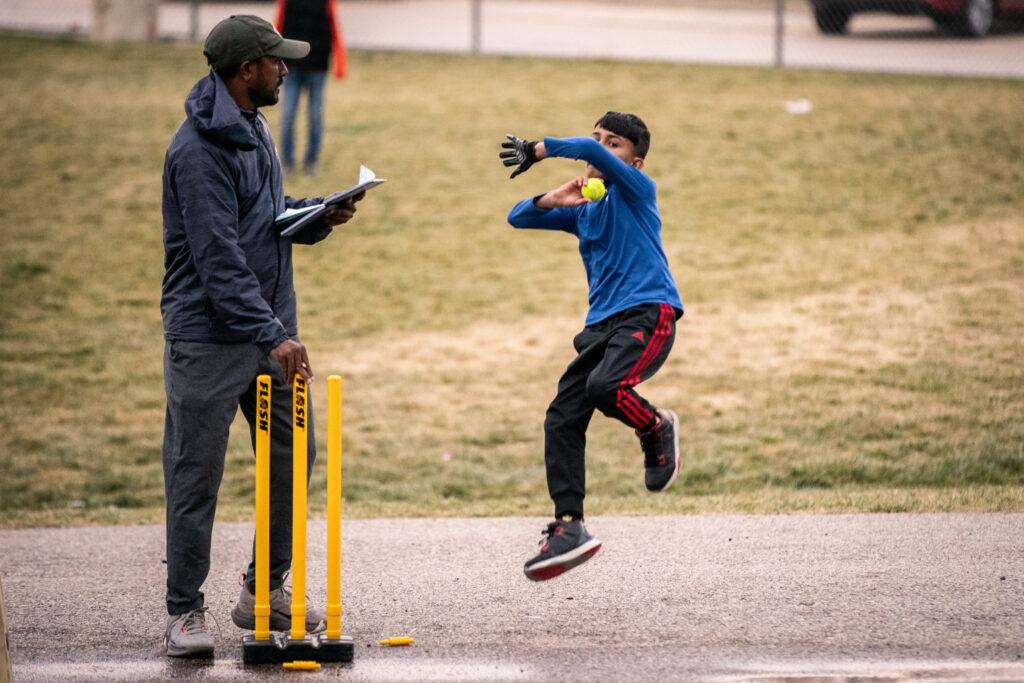
Hart Van Denburg/CPR News
Eighth-grader Bilal explains when I ask what makes the best cricket players so good.
“It’s all about your feeling, how you feel about becoming a cricket player. Like you have a good feeling, you can be the best player.”
The boys struggle to find the right words sometimes but after talking some more, Bilal means a high level of commitment, focus and passion for the game.
Middle school boys are middle school boys no matter where you were born
It’s 37 degrees out on a recent Tuesday practice. Many aren’t wearing jackets.
“Where is your coat?” I ask Rashid. He flashes a sheepish grin.
“It’s at home. I didn’t wear it because when I coming on the bus, it was warm.”
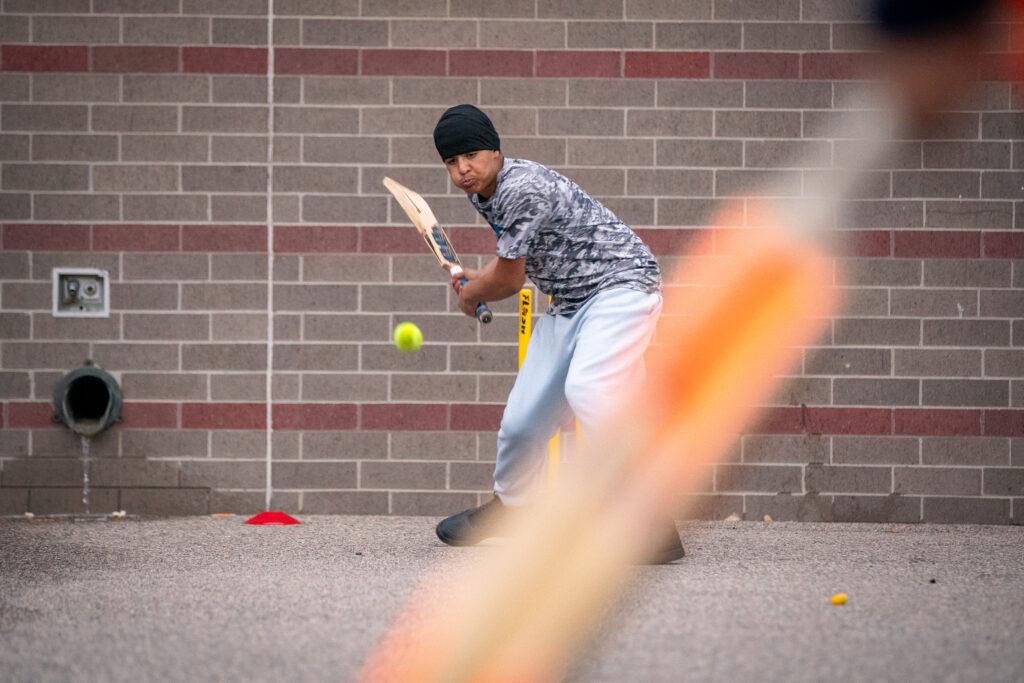
Hart Van Denburg/CPR News
It’s mid-November, and it’s getting dark and hard to see the ball. But that doesn’t matter. As the light fades and his friends run around, sixth-grader Mohamed Edres, the student who described his sadness when he first arrived as a newcomer in elementary school, tells me the club has helped shift his view of the school.
“School is like home,” he said. “Your teacher is like your mom, the principal is like your dad and the friends, they are … everybody is like your sister, brother.”
Club sponsor and teacher Fauls said that’s what makes cricket much more than a game.
“It’s just wonderful to have that community feeling here and to feel like you belong here and that you’re valued. To be able to do that for these kids warms my heart.”
